Golf Swing Tips: A Step-by-Step Guide for Beginners and Advanced Players
Golf is a sport of precision, power, and consistency. Whether you are a beginner taking your first steps in golf or an advanced player seeking to fine-tune your skill sets, mastering the golf swing is the key to forging more tremendous success. This ultimate guide provides step-by-step golf swing tips from novice to advanced levels to help you. By the end of this article, you’ll have insight into improving your power, accuracy, and consistency on the course.
Understanding the essential elements of a golf swing
Here are some basic golf swing tips before we get to some specific tips. The golf swing has four crucial phases.
1. The Setup: The stance, grip, and posture provide the template for a good swing.
2. The Backswing: You turn your body at this phase and bring the club back.
3. The Downswing: When you go from backswing to impact
4. The Follow-Through: The action of the swing after contact with the ball.
These phases play a significant role in determining your shot’s success. Let’s explore each step and provide actionable tips.
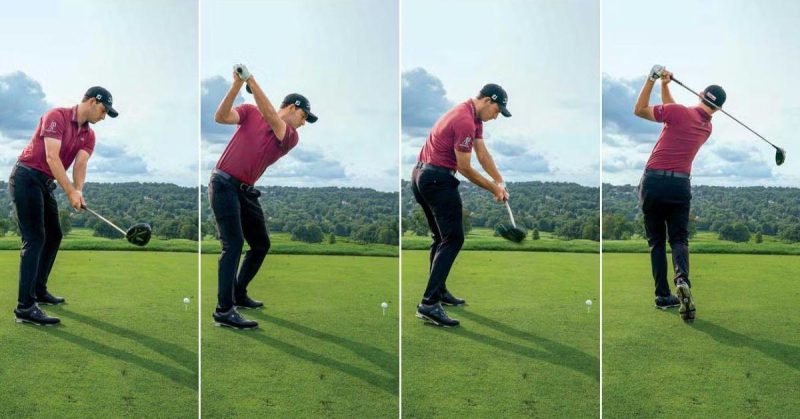
Golf Swing Tips for Beginners
The following golf swing tips will help beginners start well.
Master the Grip: A proper grip is the underlying basis for a good swing. People with smaller hands benefit from an interlocked grip; however, users with larger hands achieve better results with overlapping grip motion. Hold your stick with a controlled firmness for control without restricting movement throughout. A rigid grip reduces flexibility as well as accuracy.
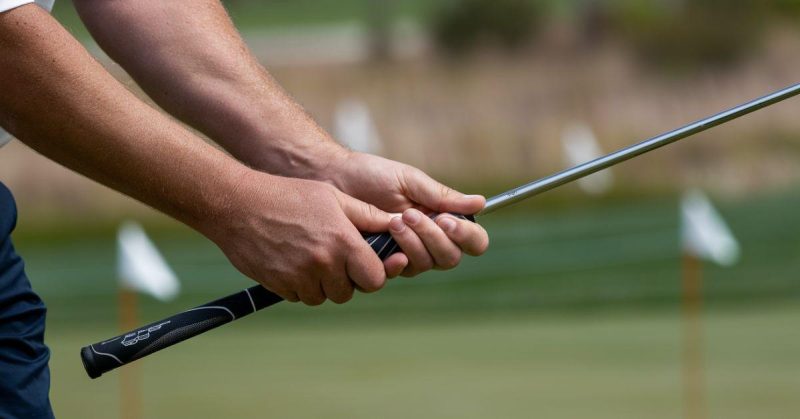
Focus on Your Stance: Maintaining a correct stance helps you achieve balance and stability. Position your body with your feet at shoulder distance and send equal weight between both lower limbs. This requires straight posture while slightly bending knees and performing a hip-tilting movement. When you stand steady, your swing becomes more assertive, and your control improves.
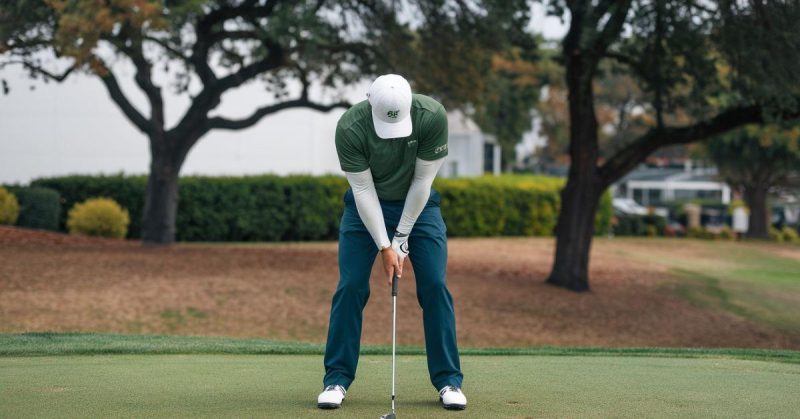
Align Your Body: Accurate shots depend on proper alignment throughout the process. Your feet, hips, and shoulders must stay aligned directly with the target direction. Alignment stick practice and club guidance permit golfers to build consistent positioning.
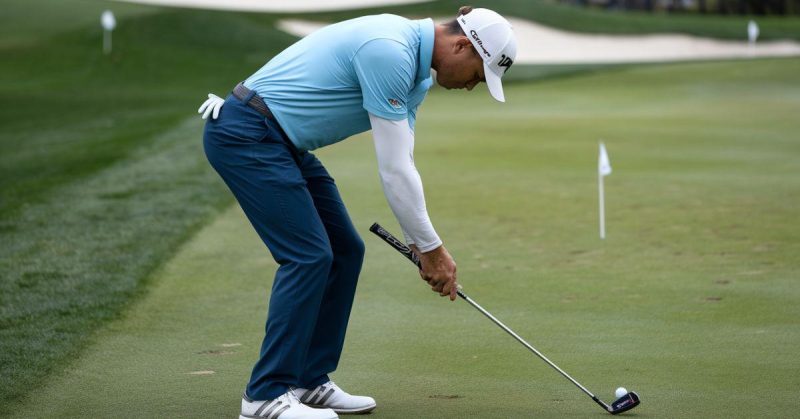
Start with a Half Swing: New golfers should practice only half swings before progressing to more significant movements to maintain control of their shots. Your swing duration should increase step by step based on your growing competence and improved coordination ability.
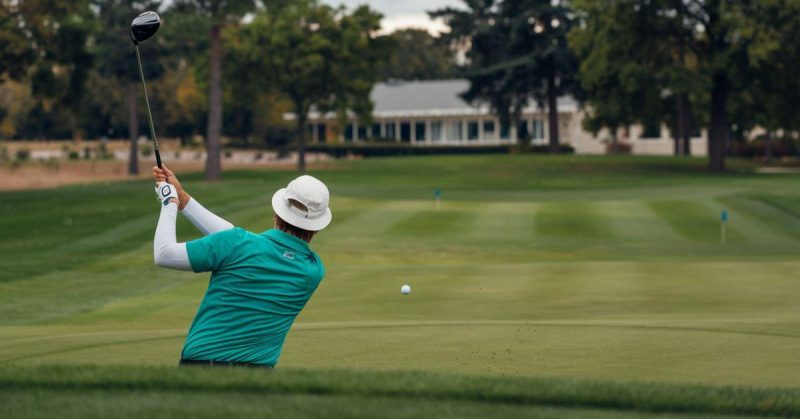
Keep Your Eye on the Ball: New players frequently fail when they raise their heads prematurely during the swing, which results in inaccurate strikes. Your head needs to stay stable alongside your focus on the ball from start to finish during your swing to achieve accurate and consistent hitting.

Advanced Golf Swing Tips
Professionals focusing on swing improvement gain better accuracy and power during their gameplay. Several superior techniques will help you take your performance to the next level.
Optimize your weight shift: Weight transfer is crucial in creating powerful golf swinging motions. Move your weight to your back foot during the backswing before transporting it smoothly towards the front during the downswing. A strategically managed weight shift produces power through contact, resulting in clean, solid ball impact.
Rotate Your Hips and Shoulders: A complete shoulder rotation during the backward swing produces torque, which converts directly to hitting power. Begin your downswing with hip movement that allows your upper body to move naturally behind. This precise movement between steps helps create balance, which boosts club speed.
Maintain a Lag in Your Downswing: The angle between your lead arm and the club shaft during your downswing movement is known as lag. Retaining a steady angle from start to finish, except during the last moment of impact, is key to maximizing clubhead speed and distance control. The early release of lag results in shots with reduced power.
Focus on Clubface Control: The position of the clubface at impact determines ball direction. To hit consistent, straight shots, practice squaring the clubface at impact. Drills and slow-motion swings can help refine your control and improve shot accuracy.
Use Your Lower Body for Power: Many advanced players rely too much on their arms, reducing efficiency. Engaging your legs and core enhances stability and generates more power. Pushing off the ground with your back foot during the downswing helps drive energy through the shot.
Analyze and Adjust: Refining your swing requires continuous self-analysis. Use video recordings or launch monitors to spot inconsistencies and make necessary adjustments. Working with either a coach or trainer brings essential feedback, which aids progress and development.
Common Mistakes to Avoid
Read the following list, which includes several typical mistakes and their correction methods.
1. Over-Swinging
- Hitting the ball aggressively tends to result in losing control of the ball’s flight path.
- Creating a managed swing motion is more important than relying solely on strength.
2. Poor Posture
- Swing mechanics become disrupted when you stand too upright or slouch during swing execution.
- Your spine should stay in a straight position during the complete swing motion.
3. Rushing the Downswing
- A quick downswing produces misalignment that leads to lousy contact positioning.
- Allow the club to naturally build speed during its motion before striking the ball.
4. Ignoring the Follow-Through
- Your swing will deliver a weak shot when you do not complete your follow-through correctly.
- Complete your swing facing the target with your chest while resting on your lead foot.
Drills to Improve Your Golf Swing
Several drills exist to improve your swing performance, which follow next.
Towel Drill: Swing your arms while keeping the towel in place, which rests under each armpit. This exercise helps both arms move together and maintains swing coordination.
Pause at the Top: Wait 2-3 seconds at the end of your backswing before initiating your downswing movement. This improves tempo and control.
Impact Bag Drill: Utilize an impact bag to learn correct club-hand positioning when making contact.
One-Handed Swings: Left-handed golfers should practice single-handed swings to develop wrist flexibility while controlling their golf club face.
The Mental Aspect of Golf
Concentration is equally vital as physical ability in golf. Following are three primary techniques to improve concentration and confidence during golf.
- You need to see yourself achieving the perfect shot before making your swing.
- You should maintain positive thinking rather than focusing on unsuccessful attempts. Focus on the next one.
- Deep breathing serves as an effective method to control nervousness and maintain attention throughout a round.
Why Select JTS Sports?
JTS Sports delivers high-quality personalized sports equipment for teams through their mass customization program which meets specific organizational requirements. JTS creates specialized performance-enhancing sports equipment that allows athletes and sports teams to receive equipment matching their distinct needs. JTS implements tailored solutions for both training and competitive purposes to boost athletic performance quality.
FAQ’s
What plays a significant role in creating a complete golf swing?
A perfect shot requires the proper execution of four elements: setup, followed by a backswing, then a downswing, and finally, follow-through.
How do golf novices improve their golf swing?
New players should concentrate on grip, stance, alignment, and controlled swings for improved accuracy.
What common mistakes should golfers avoid?
Over-swinging, posture, and rushing the downswing are all conducive to losing consistency.
Conclusion
Learning the golf swing requires dedication, continuous training, and steady persistence. These golf swing tips benefit players by allowing them to become more experienced in advancing their power, accuracy, and consistency in their golf game. Try different approaches because each player follows their path toward mastery, but stay open to discovering unique ways that work for you. The path to golfing confidence will open through commitment alongside proper skills, which will lead you toward developing your abilities.
